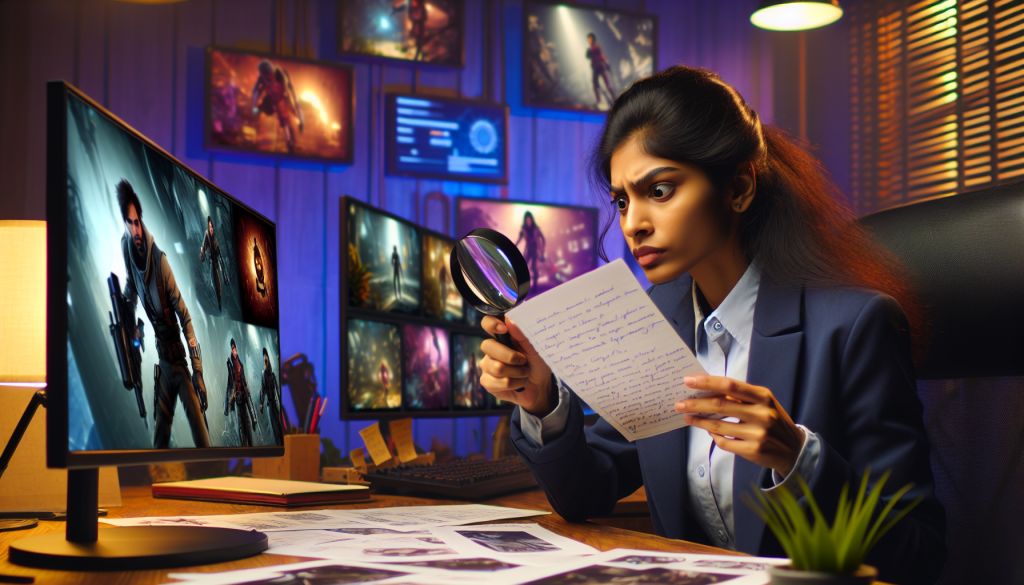Understanding the Importance of Video Game Restoration and Preservation
Video games have become an integral part of our modern culture and entertainment. They have evolved from simple pixelated graphics to immersive virtual worlds that captivate players of all ages. But have you ever stopped to think about what happens to these games once they are no longer in circulation? That’s where video game restoration and preservation come into play. Why is video game restoration and preservation important, you ask? Well, let me tell you. These games are not just pieces of software; they are cultural artifacts that hold historical value. They represent a significant era in gaming history and offer a glimpse into the technological advancements and creative innovations of the past. By restoring and preserving these games, we can ensure that future generations have access to this rich heritage. Restoring old video games may sound like a daunting task, but it’s a labor of love for many dedicated enthusiasts. The process involves resurrecting games from obsolete hardware, fixing bugs and glitches, enhancing graphics and sound, and ensuring that they are playable on modern systems. It requires a deep understanding of the game’s code, artistic design, and the technology it was originally developed for. So, how can you restore an old video game? Well, let me break it down for you. The first step is to acquire a copy of the game, either through purchasing a physical copy or finding a digital version. Once you have the game, you need to assess its condition and determine the level of restoration required. This could involve fixing broken code, repairing damaged game files, or even recreating missing assets. Next, you’ll need to research the original hardware and software used to develop and play the game. This is crucial for understanding the technical limitations and possibilities of the game’s era. With this knowledge, you can start the process of modifying and optimizing the game for modern systems, while still retaining its original charm and gameplay. Preserving video games for future generations goes hand in hand with restoration. It’s not just about making games playable; it’s about ensuring their long-term accessibility and usability. There are several techniques for preserving video games, such as creating backups, archiving original materials, and documenting the game’s history and development process. These efforts help to safeguard games from degradation, loss, or obsolescence. Collaboration is key when it comes to video game restoration and preservation. Many dedicated individuals, organizations, and museums are actively working together to share knowledge, resources, and expertise. Online communities and forums provide a space for enthusiasts to discuss techniques, troubleshoot issues, and showcase their restored games. By joining forces, we can ensure that our collective gaming heritage is preserved and celebrated. In conclusion, video game restoration and preservation play a crucial role in safeguarding the history and cultural significance of these virtual creations. By restoring old games, we can experience the magic of bygone eras and appreciate the innovation that paved the way for modern gaming. Preserving these games ensures that future generations will have the opportunity to explore and learn from the past. So, next time you stumble upon an old video game, consider the value it holds and the importance of preserving it for the enjoyment of future gamers.Steps to Restore Old Video Games
Have you ever wondered how we can bring old video games back to life? Restoring old video games is not just a hobby; it’s a way to preserve gaming history and ensure that future generations can enjoy these classic titles. In this article, we will explore the steps involved in restoring old video games and the techniques used to bring them back to their former glory.
1. Cleaning and Inspection
The first step in restoring old video games is to clean and inspect the game cartridge or disc. Over time, dust, dirt, and grime can accumulate on the surface of the game, affecting its functionality. To clean the game, use a soft cloth or cotton swab dipped in isopropyl alcohol to gently wipe the surface. Be careful not to apply too much pressure or use abrasive materials that could damage the game.
Once the game is clean, inspect it for any visible damage such as scratches or cracks. Minor scratches can often be repaired using a special polishing compound designed for video game discs. For more severe damage, professional repair services may be required.
2. Repairs and Replacements
If the game cartridge or disc is not functioning properly, it may require repairs or replacements. Common issues with old video games include faulty connectors, dead batteries, or damaged circuitry. Repairing these components requires specialized knowledge and equipment, so it is recommended to seek professional help.
In some cases, replacement parts may be necessary. For example, if the game cartridge’s internal battery is dead, it will need to be replaced to ensure the game can still save progress. Replacement parts can often be found online or through specialized video game restoration communities.
3. Data Recovery
If the game’s data is corrupted or lost, data recovery techniques can be used to retrieve it. This is particularly important for games that rely on save files or have unlockable content. Data recovery can be quite complex and should be done by experts familiar with the specific game and its file structure.
There are various methods for data recovery, including using specialized hardware or software tools. It’s important to note that not all data can be recovered, especially if it has been overwritten or damaged beyond repair. However, with the right expertise and tools, many games can have their lost data restored.
4. Preservation and Documentation
Once the video game has been restored, it’s essential to preserve it for future generations. This involves proper storage and documentation of the game’s history and condition. Storing the game in a cool, dry place away from direct sunlight is crucial to prevent further damage.
Additionally, documenting the restoration process, including before and after photos, detailed descriptions of repairs, and any additional information about the game’s history, can be invaluable for future reference. This documentation not only helps preserve the game but also contributes to the overall understanding of video game preservation as a whole.
Restoring old video games is a labor of love that requires patience, knowledge, and dedication. By following these steps and techniques, we can ensure that these classic titles live on and continue to bring joy to gamers for years to come.
Techniques for Preserving Video Games for Future Generations
Video games have become an integral part of our culture and entertainment. They not only provide endless hours of fun but also serve as an important historical record of technological advancements and artistic expression. However, the digital nature of video games poses a unique challenge when it comes to preservation. Without proper techniques and strategies, these virtual worlds could be lost to time.
So, how can we ensure that video games are preserved for future generations? Here are some techniques and best practices:
1. Emulation
Emulation is one of the most common techniques used for preserving video games. It involves creating software that mimics the behavior of older hardware and operating systems, allowing games from different eras to be played on modern devices. Emulators enable gamers to experience classic titles on their computers or portable devices, ensuring that these games are accessible and playable for years to come.
2. Digital Archiving
Digital archiving involves creating a copy of the original game files and storing them in a secure and organized manner. This ensures that even if the physical copies of the games become damaged or lost, the digital versions can be reproduced and enjoyed by future generations. It is essential to create multiple backups of these files to prevent any potential loss due to hardware failures or data corruption.
3. Documentation and Metadata
Preserving video games goes beyond just the game files themselves. It is crucial to document and record any relevant information about the game, including its history, development process, and cultural significance. This documentation can include interviews with game developers, concept art, and even player experiences. Adding metadata to the games, such as release dates, genres, and platforms, helps in organizing and categorizing the collection, making it easier for researchers and enthusiasts to navigate and explore.
4. Conservation of Physical Media
While most video games are now distributed digitally, there are still many older games that exist only on physical media, such as cartridges, discs, and cassettes. Preserving these physical copies is essential to ensure the authenticity and integrity of the gaming experience. Proper storage, temperature control, and regular maintenance are necessary to prevent deterioration and damage to these valuable artifacts.
5. Community Collaboration
Preserving video games is not a task that can be accomplished by a single individual or organization. It requires collaboration and cooperation from the gaming community as a whole. Online forums, websites, and social media groups dedicated to video game preservation provide a platform for enthusiasts to share their knowledge, resources, and experiences. By working together, the gaming community can ensure that no game is forgotten or left behind.
In conclusion, preserving video games for future generations is a task that requires a combination of technical expertise, documentation, and community collaboration. By using techniques such as emulation, digital archiving, and conservation of physical media, we can ensure that these digital artifacts are accessible and playable for years to come. So, let’s come together as a community and embark on this noble mission of preserving our beloved video games.
Collaborative Efforts in Video Game Restoration and Preservation
Preserving and restoring video games is a collective effort that involves the dedication and passion of individuals, organizations, and communities. It is not a task that can be accomplished alone, but rather one that requires collaboration and cooperation.
Why Collaboration Matters
Collaboration in video game restoration and preservation is crucial because it allows for the pooling of resources, knowledge, and expertise. No single person or organization possesses all the necessary skills and resources to effectively tackle the challenges associated with restoring and preserving video games.
By working together, individuals and groups can make significant strides in preserving video games for future generations. Collaboration fosters an environment of shared learning, where different perspectives and experiences come together to find innovative solutions.
Building Collaborative Networks
One way to foster collaboration in video game restoration and preservation is by building networks and communities. Online forums, social media groups, and dedicated websites can serve as platforms for enthusiasts to connect, exchange knowledge, and collaborate on restoration projects.
These networks provide a space for individuals to share their experiences, discuss preservation techniques, and seek advice from others with similar interests. By establishing these connections, individuals can tap into a vast pool of collective knowledge and expertise.
Collaborative networks also facilitate the sharing of resources. In the world of video game restoration, acquiring original hardware, software, and documentation can be a challenge. By connecting with others, individuals can borrow or trade resources, making the restoration process more accessible and affordable.
Partnerships with Institutions
Collaboration in video game restoration and preservation extends beyond individual enthusiasts and groups. Partnerships with academic institutions, libraries, and museums play a critical role in preserving video game history.
Academic institutions often have the resources and expertise necessary to undertake comprehensive preservation projects. By collaborating with these institutions, enthusiasts can ensure that their restoration efforts are backed by rigorous research and scholarly methods.
Similarly, libraries and museums can provide a platform for showcasing restored video games and educating the public about their historical significance. By establishing partnerships with these institutions, enthusiasts can ensure that their work reaches a wider audience and contributes to the collective understanding of video game history.
Supporting Preservation Initiatives
Collaboration in video game restoration and preservation goes beyond sharing knowledge and resources. It also involves actively supporting preservation initiatives financially and through advocacy.
Donating to preservation organizations and projects can help ensure their sustainability and enable them to continue their important work. Additionally, advocating for the recognition and protection of video game history can raise awareness about the need for preservation efforts.
By actively participating in and supporting collaborative preservation initiatives, individuals can contribute to the long-term preservation of video games and ensure their accessibility for future generations.












